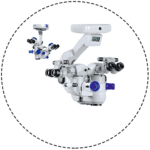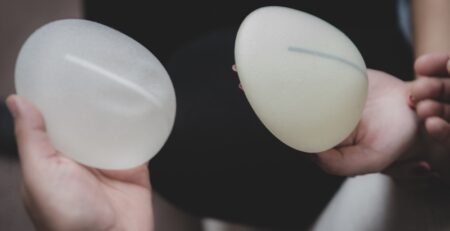Can I breastfeed with breast implants?
Dr. Abizer Kapadia2024-06-21T07:29:27+00:00Introduction
Breastfeeding is a natural interaction between a mother and baby, but for women with implants, breastfeeding might raise concerns. When it comes to breastfeeding with breast implants, just like other things about motherhood, there are a bunch of myths and misconceptions. So all the mommies get on board and continue reading to know all the details about breastfeeding with breast implants.
Expertise in Breast Implant Surgery by Dr. Abizer Kapadia
Dr. Abizer Kapadia is a leading plastic surgeon who has successfully blended expertise with empathy to provide moms with breast implants with the attention they deserve. With extensive exposure and expertise in dealing with breast implants, Dr. Kapadia has made it his priority to see to it that his patients keep their chances for breastfeeding. He arranges personalised consultations with every client to discuss their plans for breastfeeding.
The Impact of Breast Implants on Milk Production
Many people have this misconception about breast implants that they can restrict milk production, but that is not true.
You can breastfeed successfully even after the augmentation procedure. It depends on what techniques and implant type were used for your surgery, how the incision was done, and what kind of post-augmentation care was provided.
Submuscular placement is behind the chest muscle. This decreases the interaction of the nerve with milk ducts and glandular tissue.
Breast structures that are preserved through submuscular positioning facilitate good milk production.
Consulting a qualified plastic surgeon like Dr. Kapadia before augmentation will guarantee proper care. He will surely choose the best approach that meets your future breastfeeding goals.
Potential Challenges and Considerations
Breastfeeding with breast implants is indeed feasible, but there might be some challenges that mothers should become aware of. Implants do not normally interfere with milk production, though there are some difficulties to consider.
A common issue among women who undergo breast augmentation is experiencing decreased nipple sensation after the surgery. This can sometimes affect the let-down reflex, thus making it difficult for milk to flow at the time of breastfeeding.
Moreover, the breast enlargement from the surgery may lead to a puncture of the duct and, thus, make breastfeeding inefficient. The scar tissue can reshape the natural structure of the breast and prevent milk flow. In some cases, scar tissue can cause pain or exclude milk ducts, which may lead to low milk flow or breastfeeding discomfort.
However, the majority of women breastfeed their infants with silicone breast implants successfully. Healthcare providers can help you by discussing potential difficulties and telling you about breastfeeding success techniques.
Assessing Breastfeeding Potential Before Surgery
Be well informed by the surgeon about satisfactory breastfeeding plans after the breast augmentation operation.
Before starting the breast augmentation surgery, Dr. Kapadia does an overall and extensive examination of the breast anatomy and the nipples’ sensation to ensure that there is no possible effect on breastfeeding.
For instance, the shape and size of the breast, as well as the position of the nipples, are taken into consideration during the assessment stage.
The history of difficulties when it comes to breastfeeding and the medical conditions that may hinder lactation are covered.
Tailored instructions are given on surgical techniques and implant placement values.
Dr. Abizer Kapadia can help you in the decision-making process.
Breastfeeding Techniques for Mothers with Implants
Proper Latch and Positioning Techniques: Making sure the latch is adequate will help mothers provide milk to the baby efficiently so that they do not experience any pain, especially for the breasts with implants. Mothers are advised to use a deep latch, where the infant’s mouth covers the nipple as well as some of the surrounding area. Latching the baby well helps stimulate milk flow and can prevent nipple pain during feedings. Trying out different ways to sit while breastfeeding, including the cradle hold, football hold, and side-lying position, maybe another useful strategy for a mother to discover the best fit for her body and also a new way for her to breastfeed with implants effectively.
Breast Massage: Massaging breasts gives mothers a chance to increase milk secretion and evade unwanted fullness. Sincere and gentle massage of the breasts before and during breastfeeding can get rid of the clogged milk ducts and consequently stimulate the flow of nutrient-rich milk to the baby. Aside from rotating the nipple and the areola anticlockwise with a finger and thumb, the breast massage in a circular manner from the outer portions to the nipple has a similar effect and also helps to relieve pain associated with discomfort and cutaneous engorgement.
Frequent Nursing or Pumping Sessions: The doctor suggests a regular schedule of breastfeeding and pumping sessions to be followed for mothers with breast implants. Through advocating for regular visits to the nurse’s units and instructing on efficient pumping methods and proper storage, Dr. Abizer Kapadia aims to equip mothers with the tools that they can use to achieve breastfeeding. Dr. Kapadia’s dedication to patients’ education and his continual support for his patients are proof of his dedication to helping mothers get over the challenges of the breastfeeding process with silicone implants with confidence.
Consulting with professionals
The employment of lactation consultants is vital in ensuring breastfeeding mothers will find the assistance they need, even if breast implants are performed.
An appointment with a lactation professional will give a person a particular plan and move them through effective techniques for realising the problem that they are experiencing.
Lactation consultants can approach these situations with expertise in resolving lactation problems like milk supply issues, latch problems, and other breastfeeding difficulties that may be present due to breast implants.
Conclusion
Women with breast implants need to look at every possible risk and complication before surgery. It may be necessary for them to get additional support and to implement measures aimed at alleviating possible difficulties. Knowing that breastfeeding may be affected by breast implants, Dr. Abizer Kapadia provides an honest assessment before surgery where you can ask questions or just ask for professional guidance. Women with breast implants can breastfeed with enough knowledge and, in the end, take good care of their children.




















